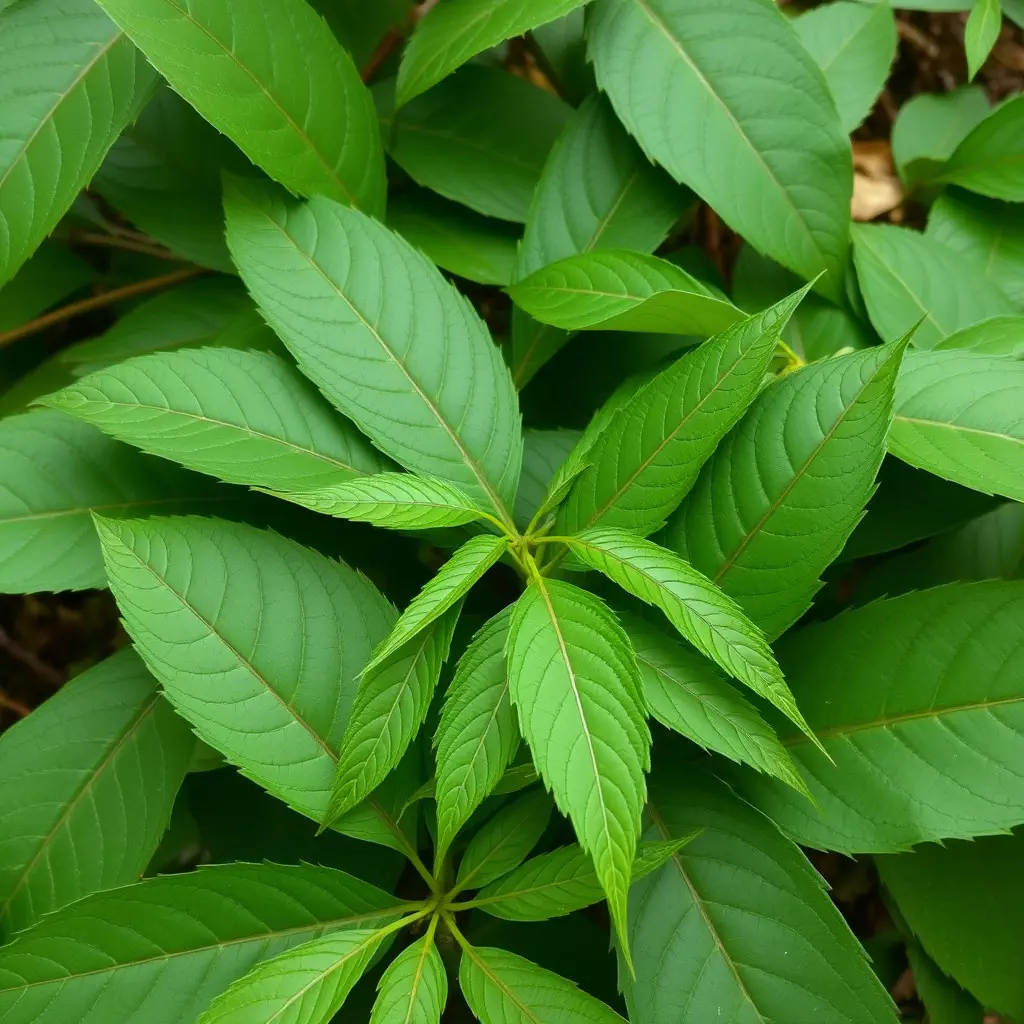Kratom-Fueled Post-Workout Recovery is an emerging approach for athletes to enhance their muscle recovery and performance optimization. Extracted from the Mitragyna speciosa tree, kratom contains alkaloids like mitragynine and 7-hydroxymitragynine that may interact with opioid receptors to provide potential analgesic effects for managing post-exercise muscle soreness. This can be particularly useful for athletes engaged in high-intensity or endurance training by potentially reducing recovery time and enabling more frequent and rigorous workouts. Additionally, kratom is known for its mood-elevating properties that support mental resilience during prolonged training periods.
For safe and effective use, precise dosing and strain selection from options like Maeng Da, Bali, Borneo, Indo, White Vein Thai, or Green Vein Indonesian are crucial, guided by health professionals. A tailored approach that takes into account individual physiology, workout intensity, and overall health is necessary to optimize recovery while minimizing side effects. Athletes should monitor their response to kratom and adjust their recovery strategy as needed, ensuring adherence to legal and ethical standards in sports. Kratom-Fueled Post-Workout Recovery can be a promising addition to an athlete's performance enhancement regimen when used responsibly and as part of a comprehensive recovery plan that includes proper nutrition and hydration.
Embarking on a fitness journey often requires a blend of rigorous training, proper nutrition, and strategic recovery techniques. Among these, kratom has emerged as a supplement that may aid in enhancing athletic performance through its unique properties. This article delves into the potential benefits of incorporating kratom into a post-workout routine, offering insights into optimal performance enhancement. We’ll explore the diverse strains of kratom and their individual impacts on muscle recovery and energy replenishment, guiding readers to craft a personalized Kratom-Fueled Post-Workout Recovery regimen that bolsters athletic endurance and potential. Join us as we navigate the mitragyna landscape for athletes seeking to elevate their game.
- Unlocking Optimal Athletic Performance Enhancement with Strategic Kratom Use for Post-Workout Recovery
- Navigating the Mitragyna Landscape: Understanding Kratom Strains and Their Role in Muscle Soreness Relief and Energy Restoration
- Crafting Your Kratom-Infused Post-Workout Routine for Maximized Athletic Potential and Endurance
Unlocking Optimal Athletic Performance Enhancement with Strategic Kratom Use for Post-Workout Recovery

Integrating kratom into a post-workout recovery regimen can be a strategic approach to enhance athletic performance enhancement. Kratom, derived from the leaves of the Mitragyna speciosa tree, is known for its alkaloid content, which includes mitragynine and 7-hydroxymitragynine. These compounds are believed to interact with opioid receptors in the brain, potentially offering analgesic effects and easing muscle soreness post-exercise. Athletes who engage in high-intensity or endurance training often experience muscle fatigue and inflammation, which can impede subsequent workouts. By utilizing kratom-fueled post-workout recovery, athletes may experience reduced recovery time, allowing for more frequent and intense training sessions. Additionally, the mood-elevating properties of kratom can help in maintaining mental resilience, a critical aspect of performance, especially during prolonged or grueling training periods.
To harness the benefits of kratom for post-workout recovery effectively, it is crucial to approach its use with caution and informed guidance from health professionals. Dosage and strain selection are key factors in achieving the desired effects without overstepping into the realm of negative side effects or unintended outcomes. A well-planned recovery protocol that incorporates kratom should be tailored to the individual’s unique physiology, workout intensity, and personal health considerations. Regular monitoring and adjustments to this protocol are necessary to optimize performance enhancement while minimizing risks. Kratom-fueled post-workout recovery holds promise for athletes seeking to improve their performance through better recovery strategies. However, it is essential to navigate this approach within the bounds of legal regulations and ethical sports practices, ensuring compliance with both governing bodies and personal health standards.
Navigating the Mitragyna Landscape: Understanding Kratom Strains and Their Role in Muscle Soreness Relief and Energy Restoration

Navigating the diverse Mitragyna landscape presents athletes with a nuanced approach to enhancing performance through kratom strains, each offering distinct properties for recovery and energy restoration. Kratom, derived from the leaves of the Mitragyna speciosa tree, has garnered attention in athletic circles due to its potential impact on post-workout recovery. The alkaloids found within this botanical, particularly mitragynine and 7-hydroxymitragynine, are thought to play a role in pain relief, which can be pivotal for muscle soreness that often accompanies intense physical activity.
When considering kratom-fueled post-workout recovery, it’s crucial to explore the various strains available and their unique effects. For instance, Maeng Da kratom is renowned for its balanced alkaloid profile, offering both analgesic and energizing properties, which can be beneficial in reducing post-exercise discomfort while simultaneously fostering a sense of vitality. Similarly, Bali kratom is another strain that’s often sought after for its soothing effects, which may aid in muscle relaxation and pain relief, facilitating a more comprehensive recovery process. Strains like Borneo and Indo are also favored for their relaxing properties, contributing to a restorative post-workout state. Conversely, strains such as White Vein Thai or Green Vein Indonesian kratom may offer a more invigorating effect, which can be advantageous for those looking to enhance energy levels and endurance during training sessions or competitions. Athletes should approach the use of kratom with caution, adhering to recommended dosages and consulting healthcare professionals before incorporating it into their fitness regimen, as individual responses to kratom can vary significantly. Proper hydration and nutrition are also paramount in achieving optimal recovery outcomes, with kratom serving as a complementary tool rather than a sole solution for athletic performance enhancement.
Crafting Your Kratom-Infused Post-Workout Routine for Maximized Athletic Potential and Endurance

Integrating kratom into a post-workout routine can be a strategic approach to enhance recovery and prepare for subsequent training sessions. When selecting a kratom strain, consider one that is known for its balancing properties, such as Bali or Indo, which can help in reducing muscle soreness without overstimulating the body. After an intense workout, consuming kratom can support the body’s natural healing processes by modulating pain signals and promoting a state of relaxation conducive to recovery. It’s crucial to monitor individual responses to kratom, as effects may vary based on factors like metabolism, tolerance, and personal physiology.
To maximize athletic potential and endurance, athletes can tailor their kratom-fueled post-workout recovery routine to their specific needs. A common approach is to take a lower dose of kratom after training to assist with pain relief and muscle relaxation without impairing the athlete’s ability to engage in daily activities or subsequent workouts. Additionally, incorporating a nutritious meal timed alongside the kratom consumption can enhance the benefits by providing the necessary macronutrients and micronutrients that support overall health and recovery. Hydration is equally important; ensuring adequate hydration will complement the effects of kratom and contribute to maintaining electrolyte balance, which is essential for sustained performance.
Integrating kratom into a post-workout regimen may offer significant benefits for athletes seeking to enhance their recovery and performance. By carefully selecting appropriate strains and adhering to a well-crafted routine, as detailed in the sections on optimal athletic performance enhancement and understanding the mitragyna landscape, athletes can potentially experience reduced muscle soreness and restored energy levels. The key takeaway is that kratom-fueled post-workout recovery holds promise for those aiming to elevate their athletic potential and endurance. Athletes are encouraged to approach this integration with caution, adhering to best practices and guidelines to ensure safe and effective use within their training regimens. As the research evolves, so too should the understanding and application of kratom in the realm of sports performance enhancement.






